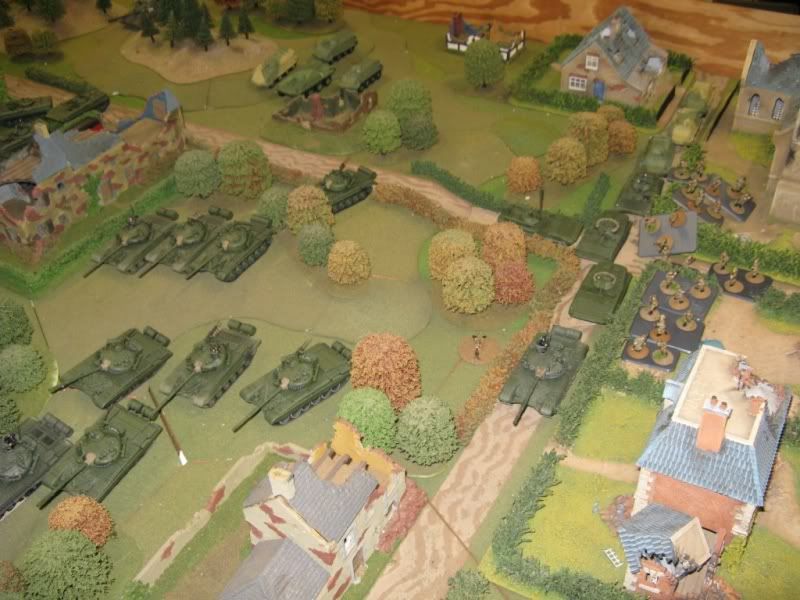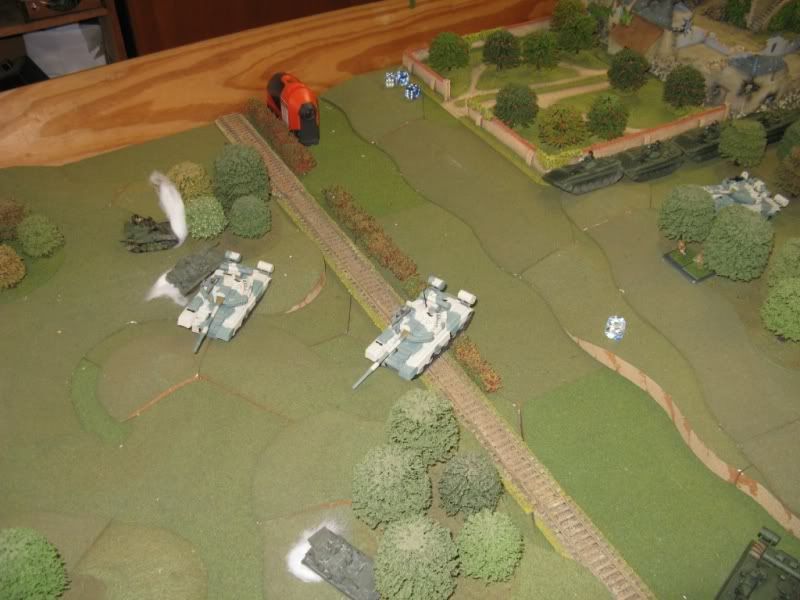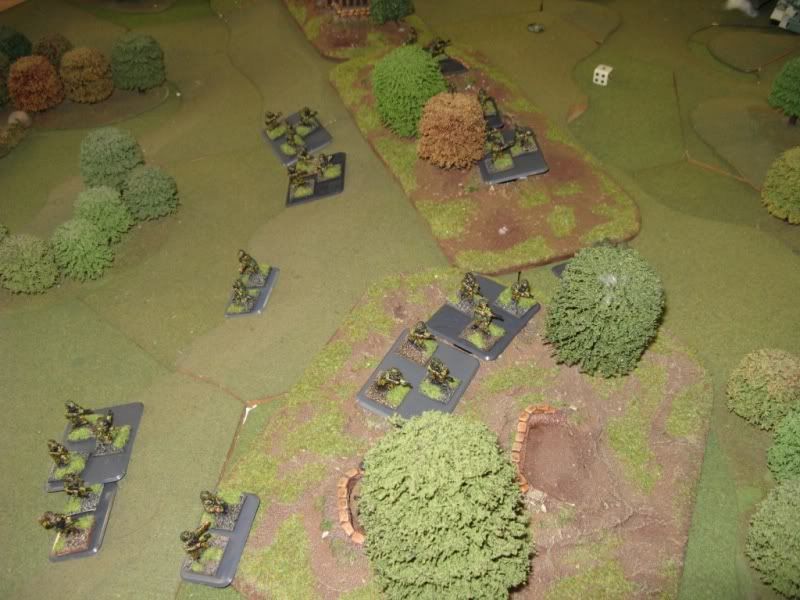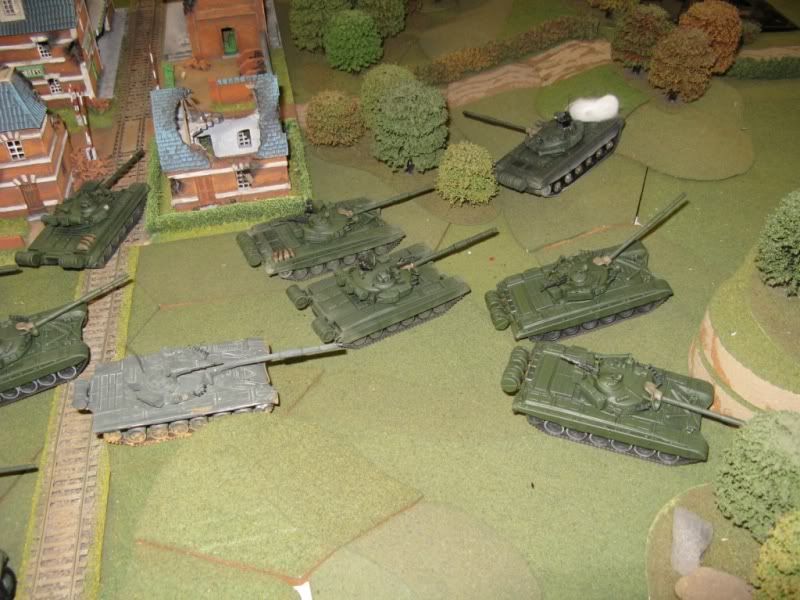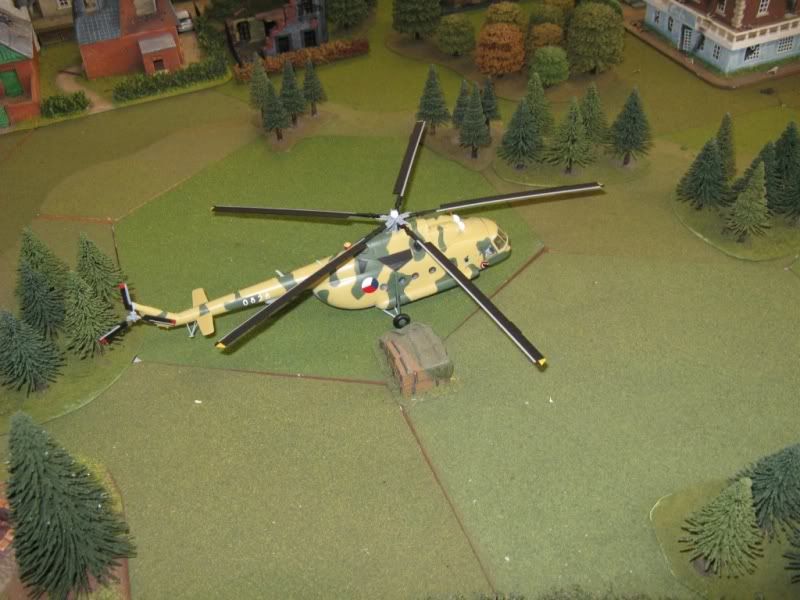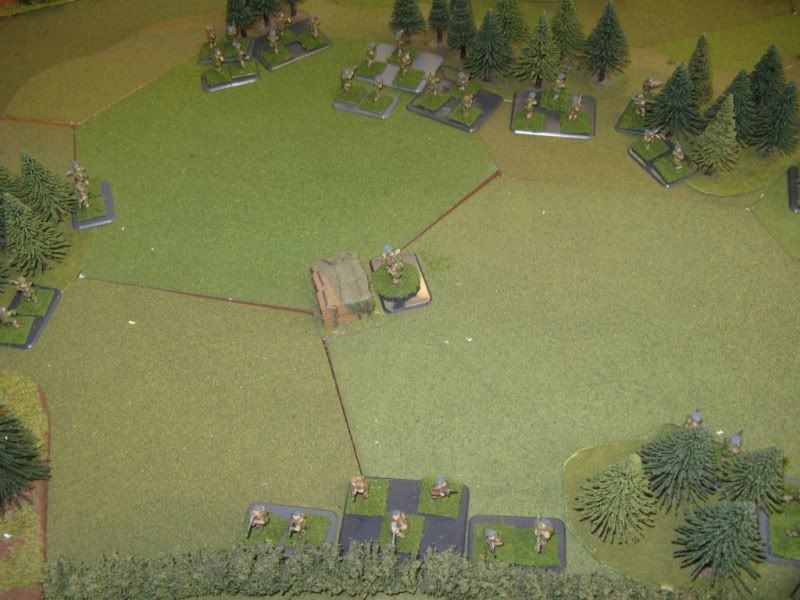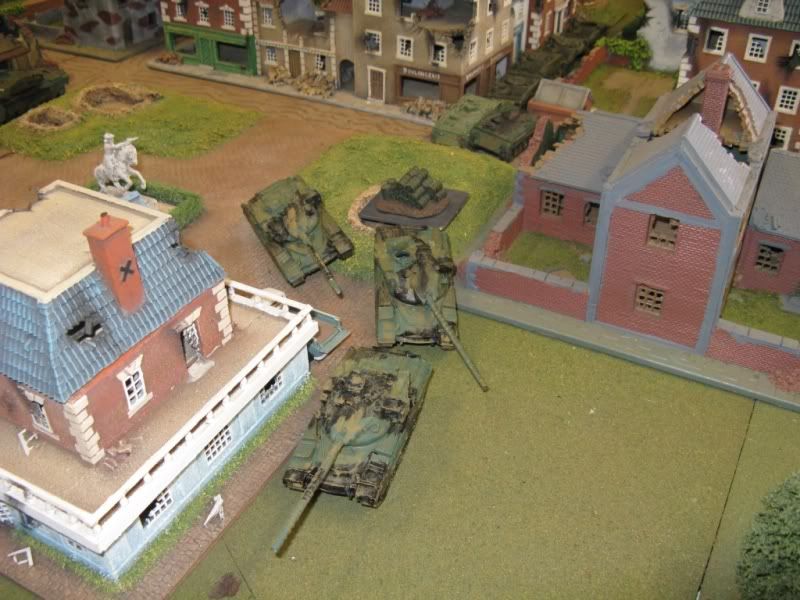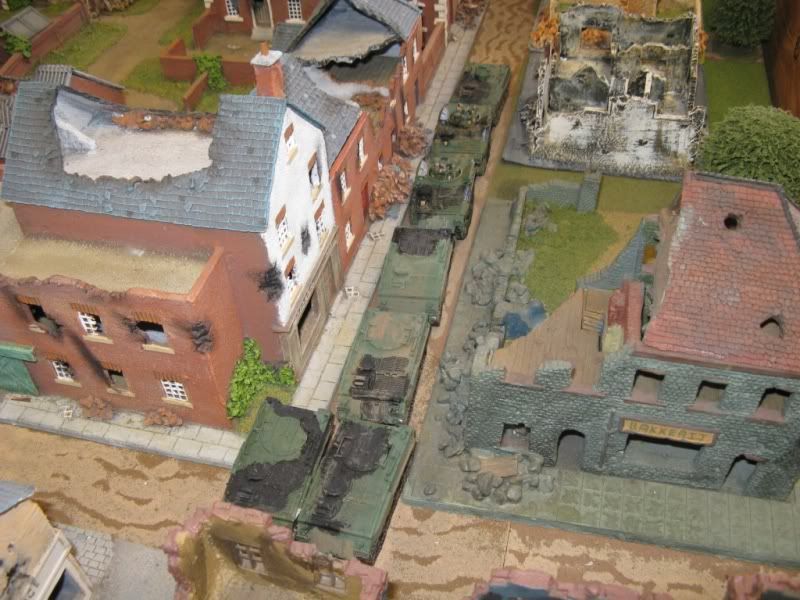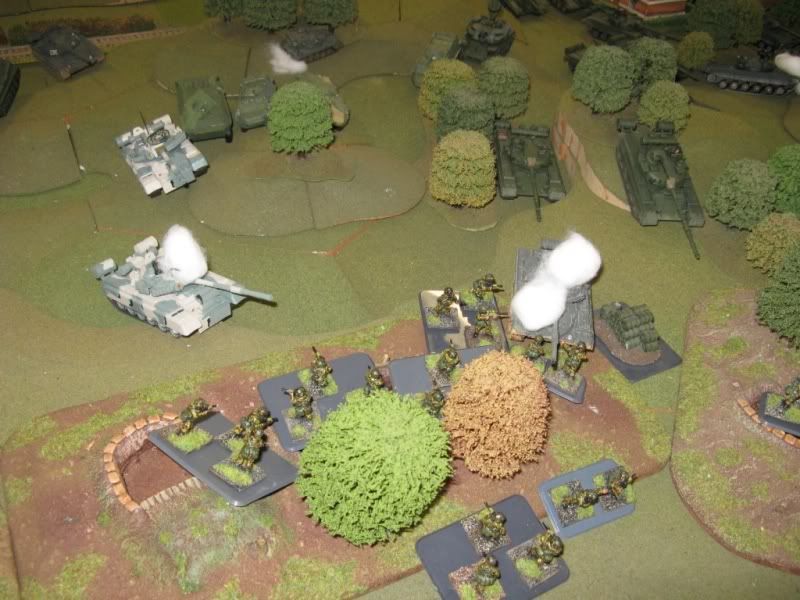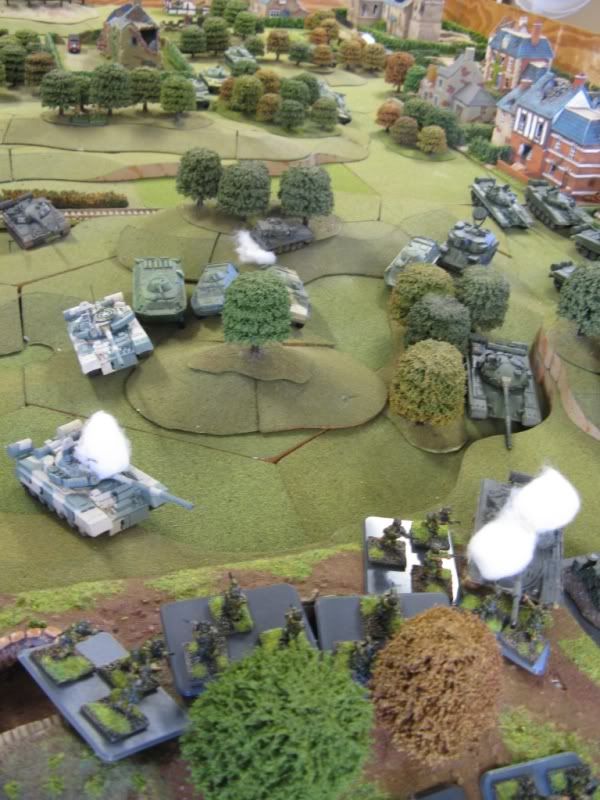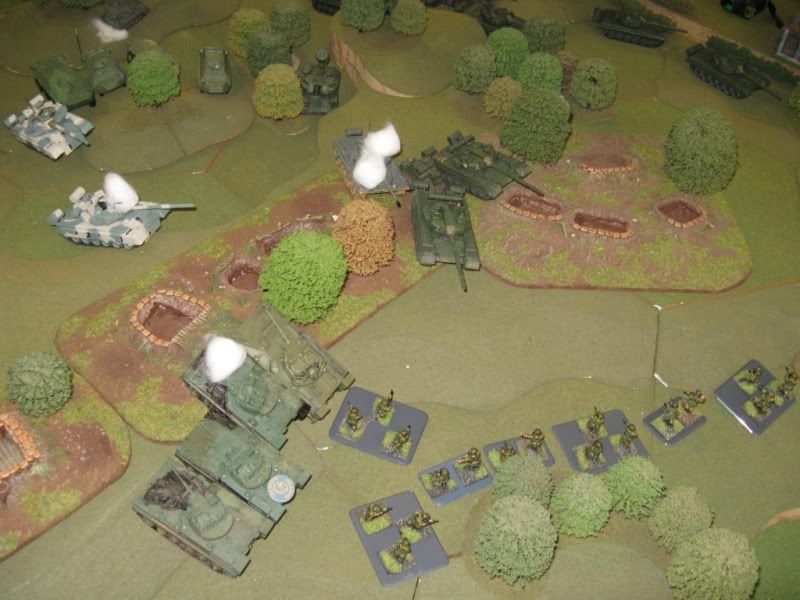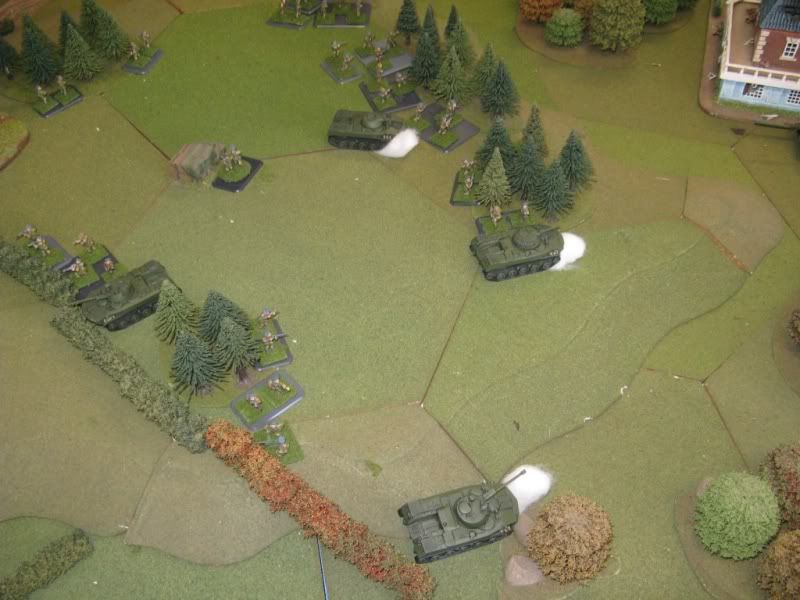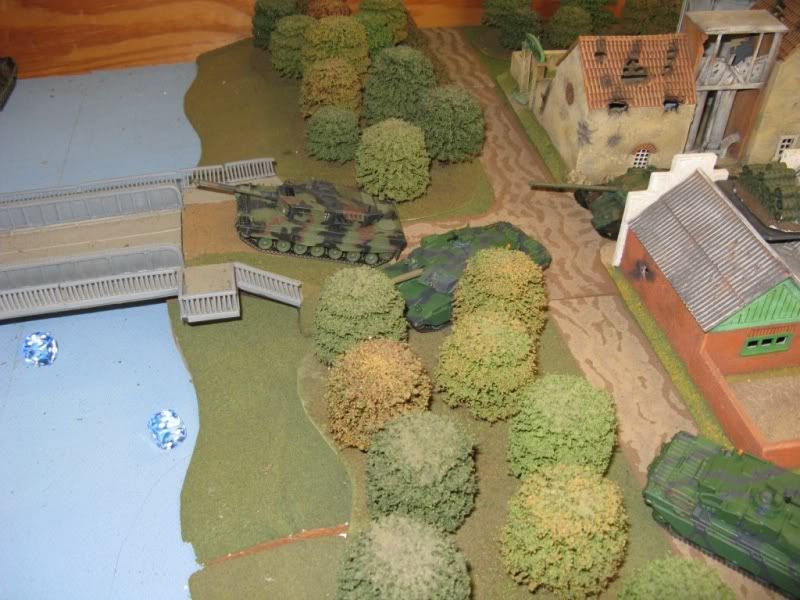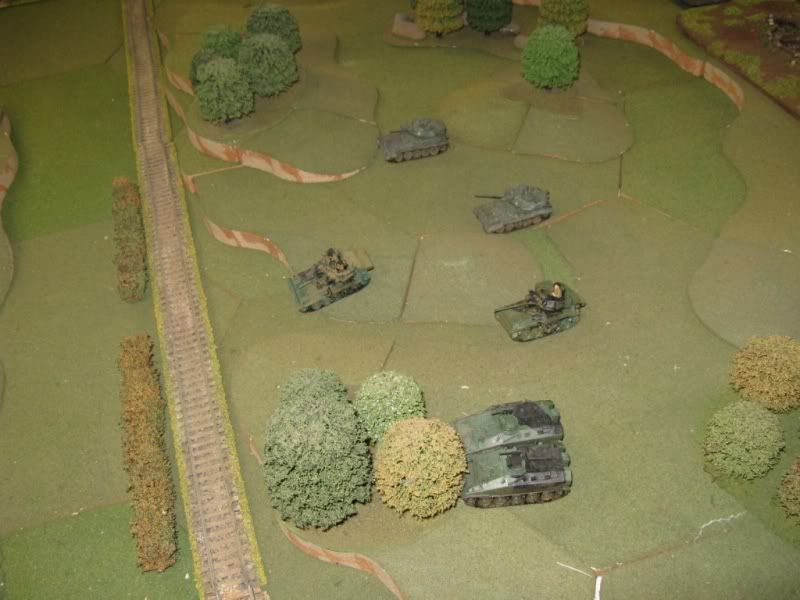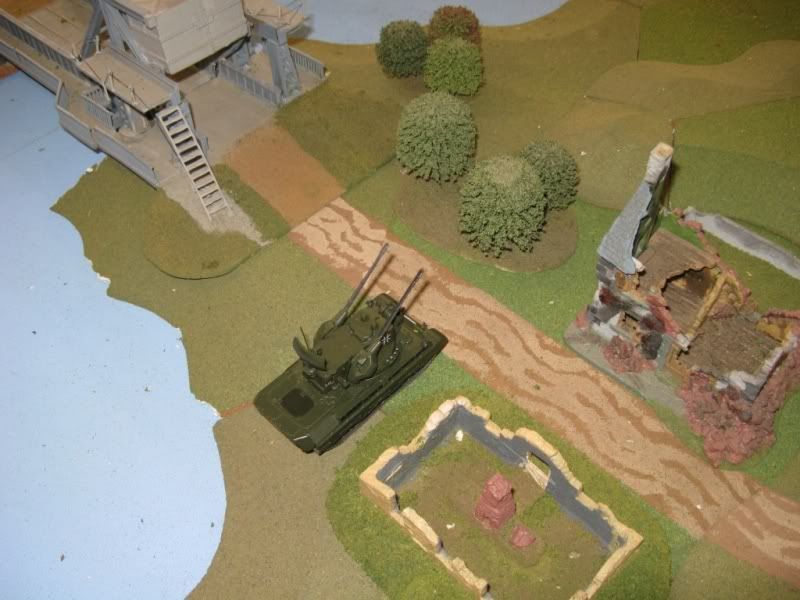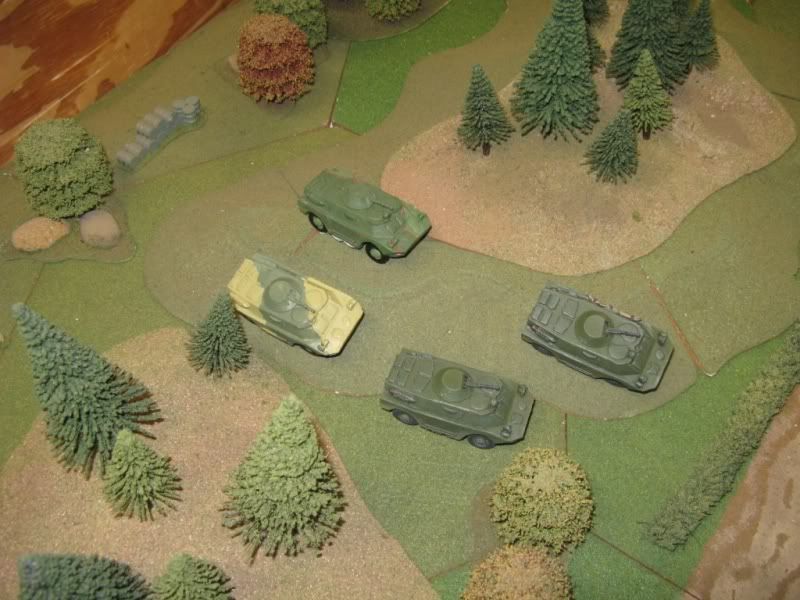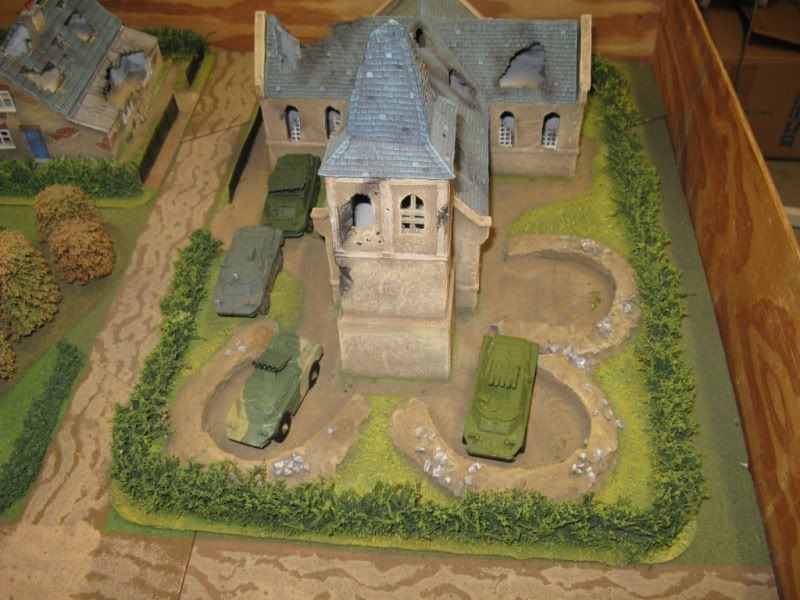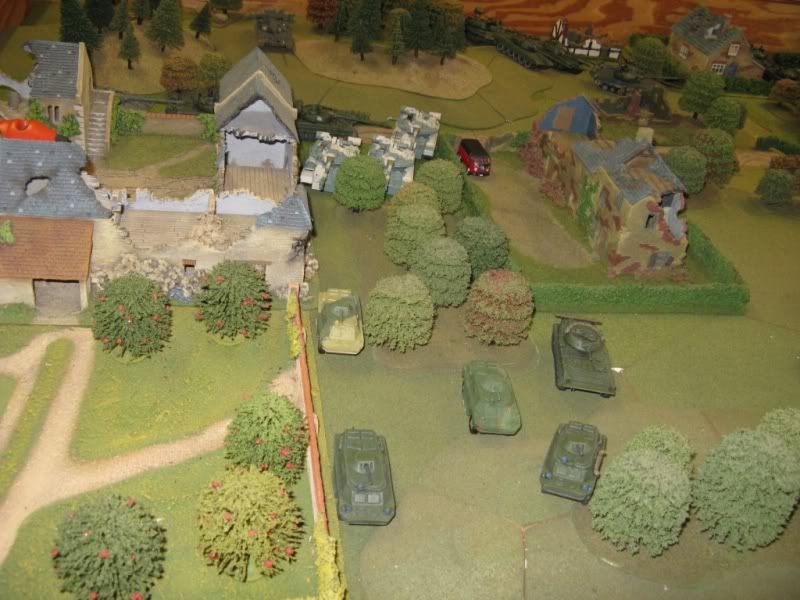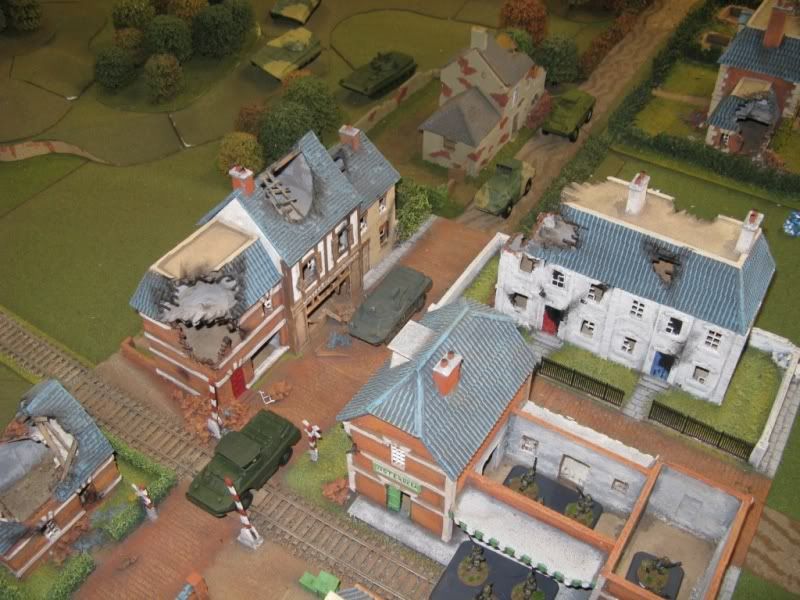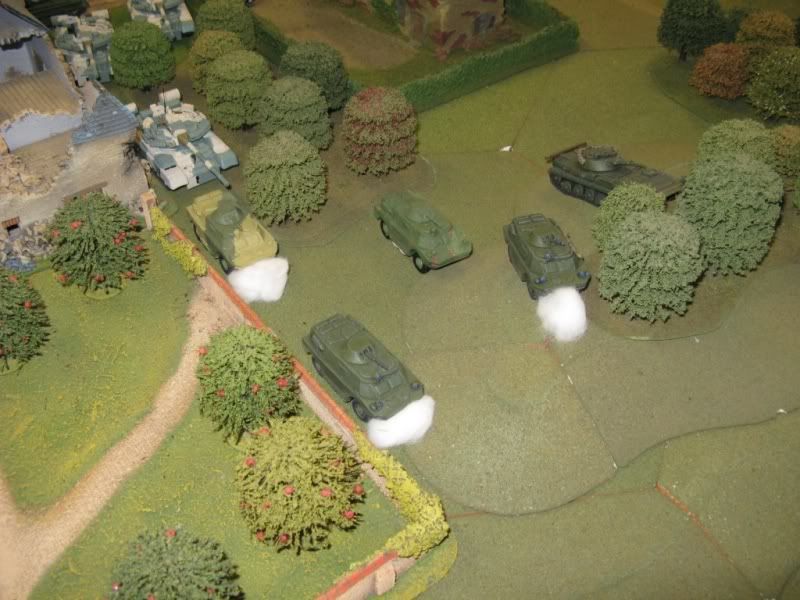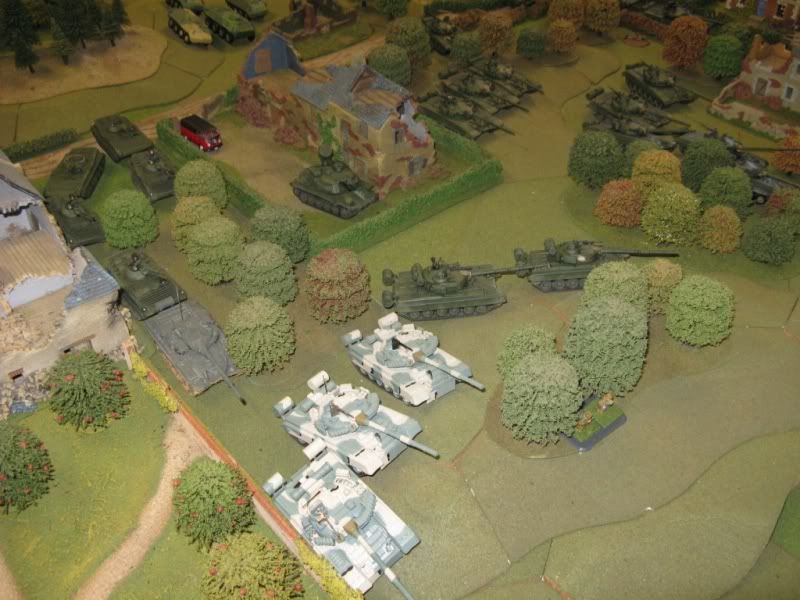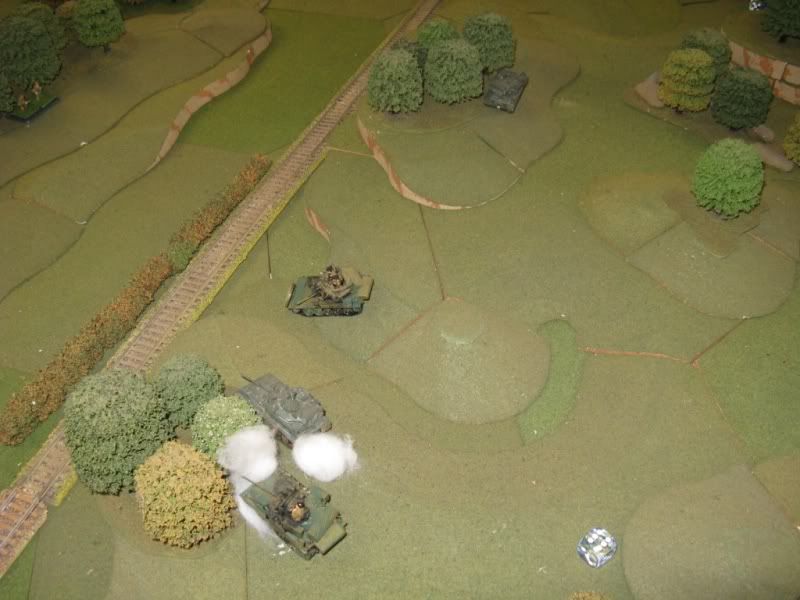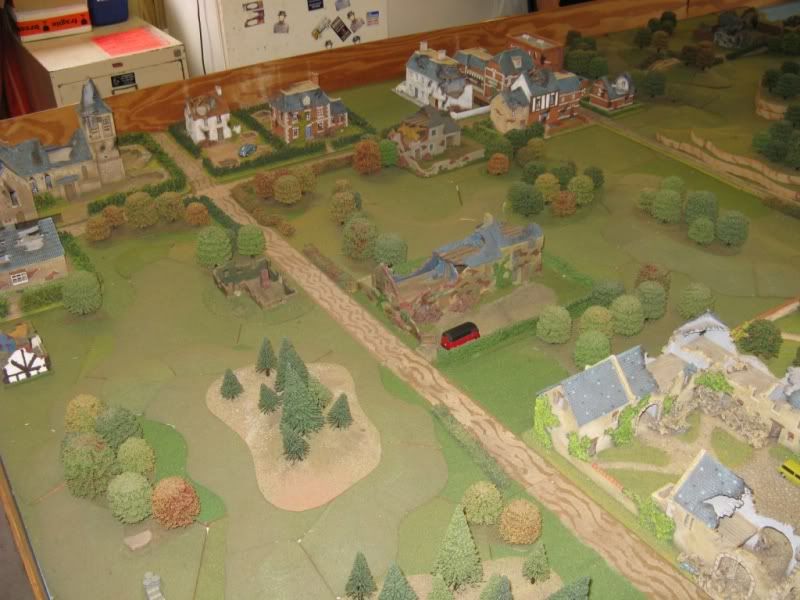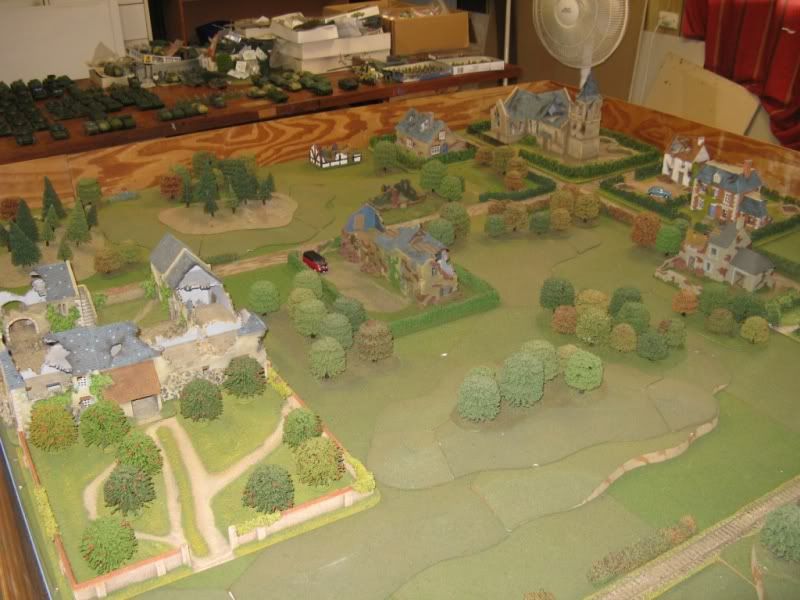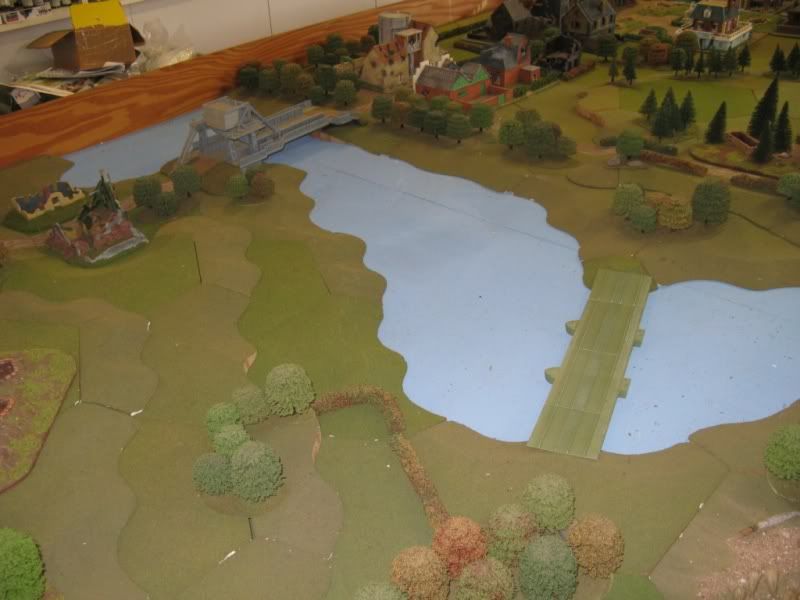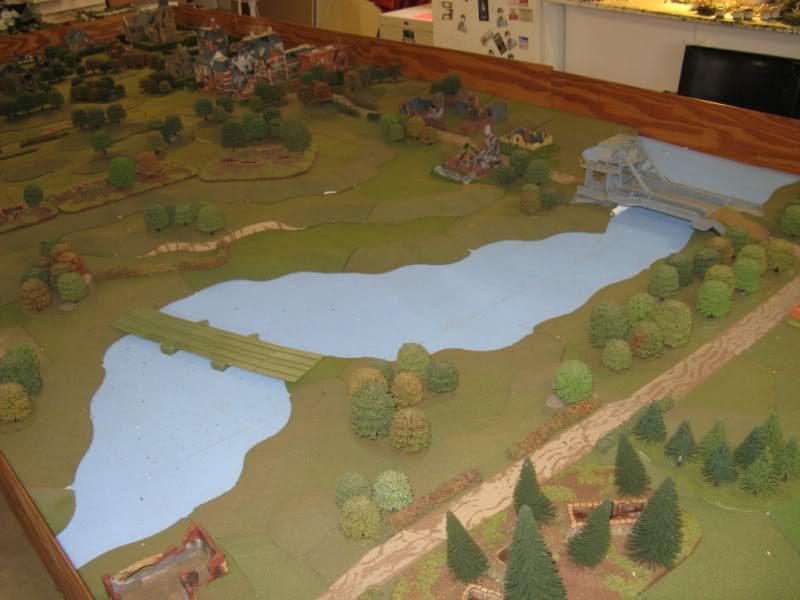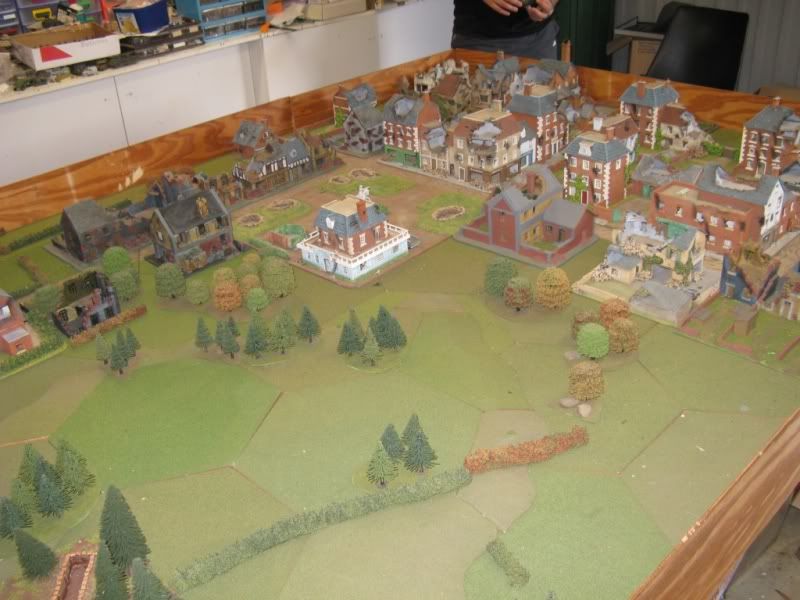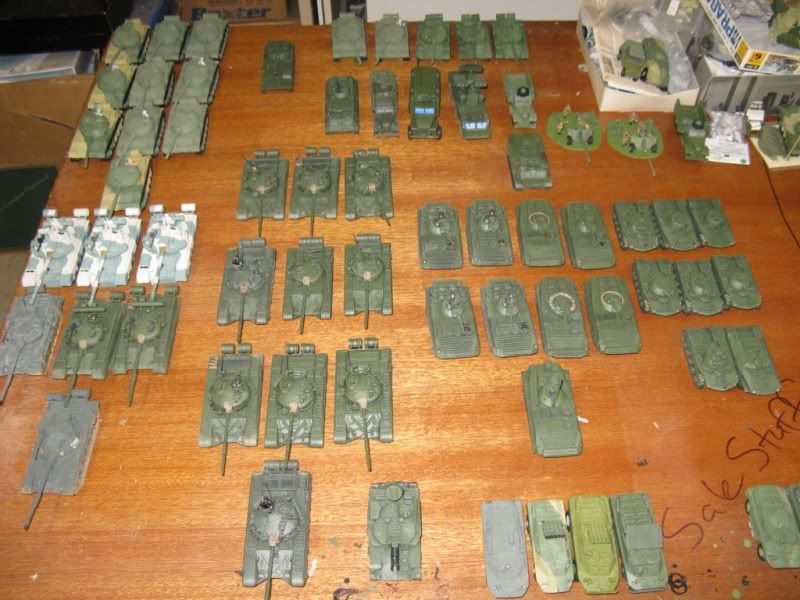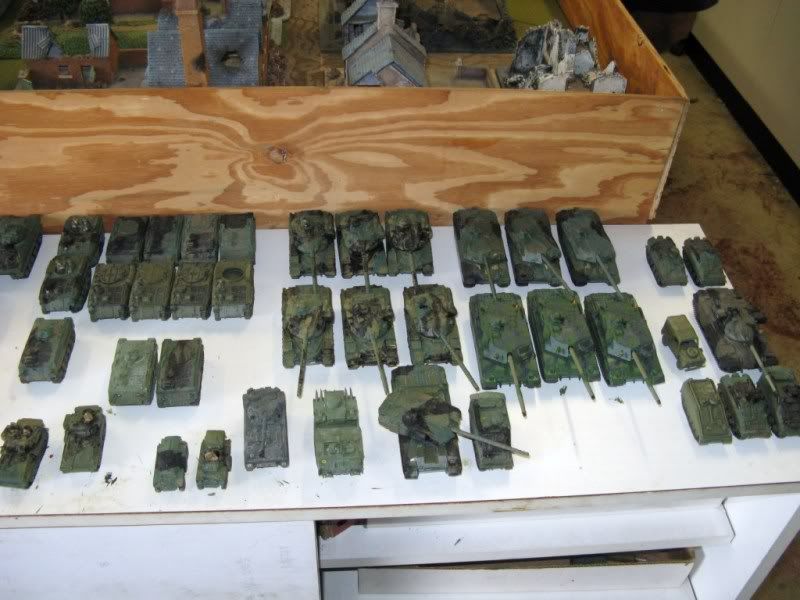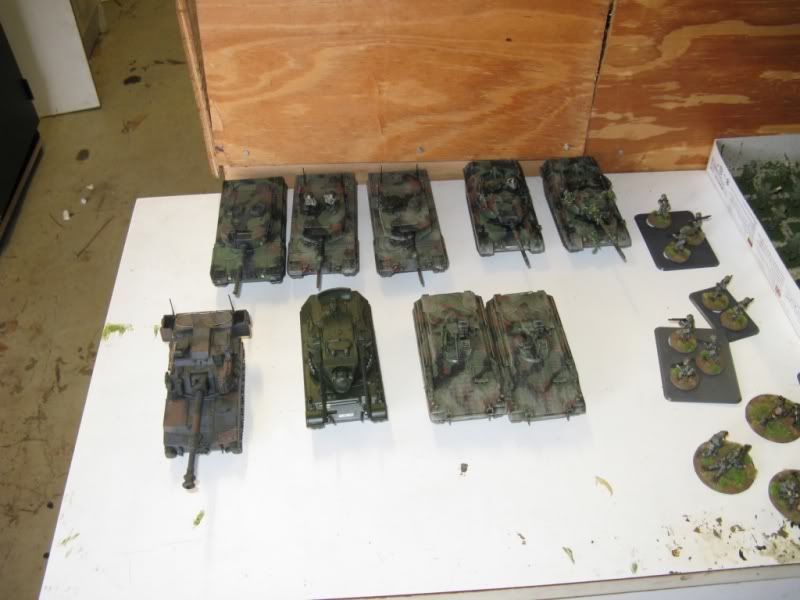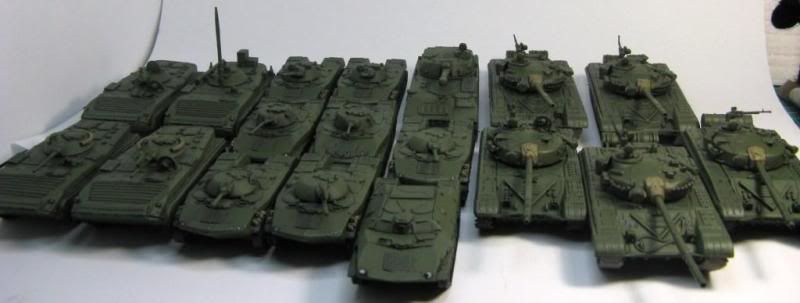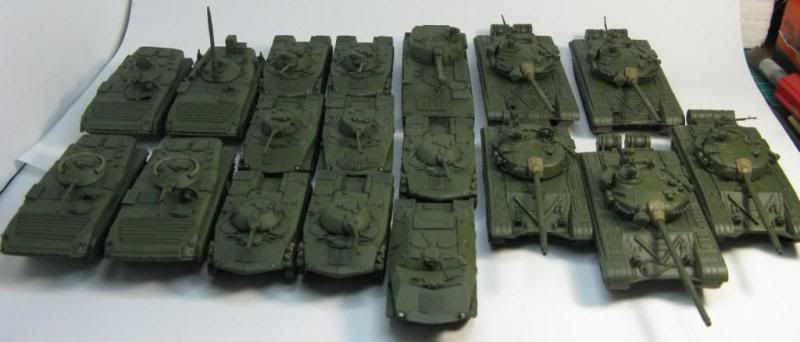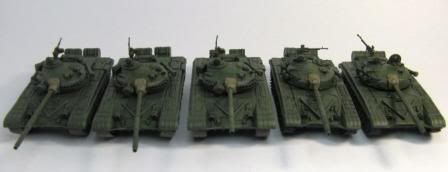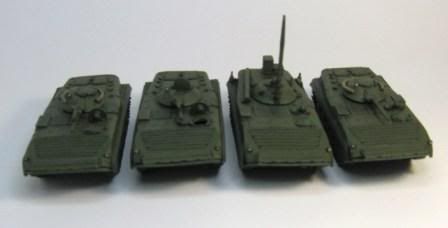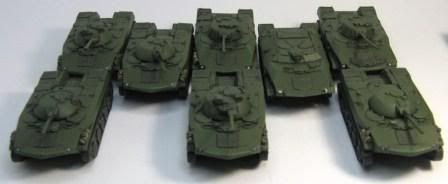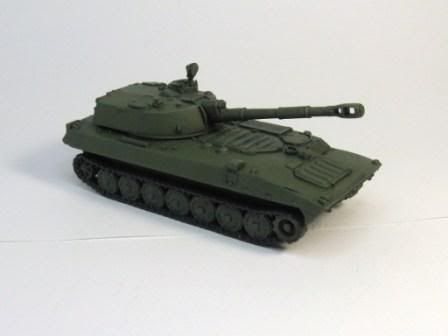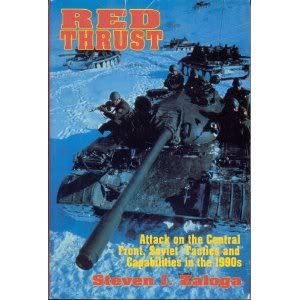
In my never ending quest for good quality books on a Cold War turned hot, I recently acquired a copy of Red Thrust: Attack on the Central Front, Soviet Tactics and Capabilities in the 1990s by Steven Zaloga. At first I was a little worried that the book would be perhaps a little too modern – as my standard timeframe for the Cold War is the mid to late 1980’s, but upon reading it, Red Thrust more than suited my purposes.
Basic Premise
Written in 1989, before the fall of the Berlin Wall and the general implosion of the Warsaw Pact and the Soviet Union, Zaloga creates an interesting and extremely plausible scenario where a moment of general slackness during a fire of a Soviet base in East Germany leads to an ammunition explosion that kills a large number of civilians (including children).
This simple incident leads to a series of national protests and even some terrorist incidents directed at Soviet troops. Martial law is declared and things go from bad to worse when Soviet motor rifle troops are thrown into police actions with no police training and AKs instead of riot gear.
The East Germany army – considered by NATO and the Soviets to be the most reliable is not happy with the way the Soviets are dealing with their citizens and at times help the rioters. It reaches a point in Berlin where an East German army unit actively helps civilians cross into West Berlin and then engage in a battle with Soviet forces. Inevitably fighting spreads and West German army and police units also engage Soviet forces when civilians are targeted.
Once the fighting cools down, the Soviets start a new blockade of Berlin. The West German attempt to break the air blockade and a number of air battles occur and SAM sites both in East and est Germany are targeted, including US sites. Polish and Czech nationalists start to seize on the Soviets inability to deal with East Germany by starting their own anti-soviet actions.
All this basically leads the Soviets to decide to take out West Germany before NATO can get ready to maybe drive on East Germany to relieve Berlin. The Soviets believe they can reach the Rhine in 7 days – well before the US can effectively reinforce NATO.
Remainder of the Book
This premise sets up the rest of the book. The focus shifts from the strategic view to events in Bavaria where The Southwestern front attacks out of Czechoslavakia. Each chapter (including the introduction which outlines the plans and events that I briefly described above) focuses on a particularly element of the Soviet military – firstly in a fictional scenario, then an analysis of what just happened, providing background, explanations and comparisons.
The chapters are as follows:
1. Plan Buran: The Invasion of Western Europe
2. Motor Rifle Attack: The skirmish in Hofzell Woods
3. Tank Attack: The Charge at Presbach
4. Spetsnaz in Action: Scouting the Danube Bridgehead
5. Attack Helicopters: The Air Assault at Irlbach
6. Red Artillery: The God of War
7. Fighter Combat: The Battle for the Airfields
8. Chemical Warfare: Gas Attack at Geiselhoring.
I very much enjoyed reading this excellent book. The fictional scenarios at the beginning of each chapter are very well written, and transfer information in an engaging manner. Zaloga can write good fiction, including gritty action scenes, not just the facts and figures he’s probably more well known for.
The book is solely written from the Soviet perspective and vehicles and weapons systems are called by their Soviet names and nicknames rather than NATO titles. It includes things like why the Soviet’s tanks are smaller than their NATO counterparts, what its like to go into combat in a BMP-2, the difficulties involved in air assaults, Soviet NBC suits, a good review of the thinking behind the Hind helicopter etc.
Although set in the 1990s, I’d say that 99.9% of the information is applicable to the late 80’s and the stuff that probably isn’t applicable is more likely to do with NATO advances such as precision guided munitions, SADARM and DPICM munitions.
All-in-all, if you’re interested in this stuff at all (and by stuff I mean Cold War Hot Hot Hot stuff), I think you’d be pretty happy with this book and I heartily recommend it to you.
Have fun
Richard
